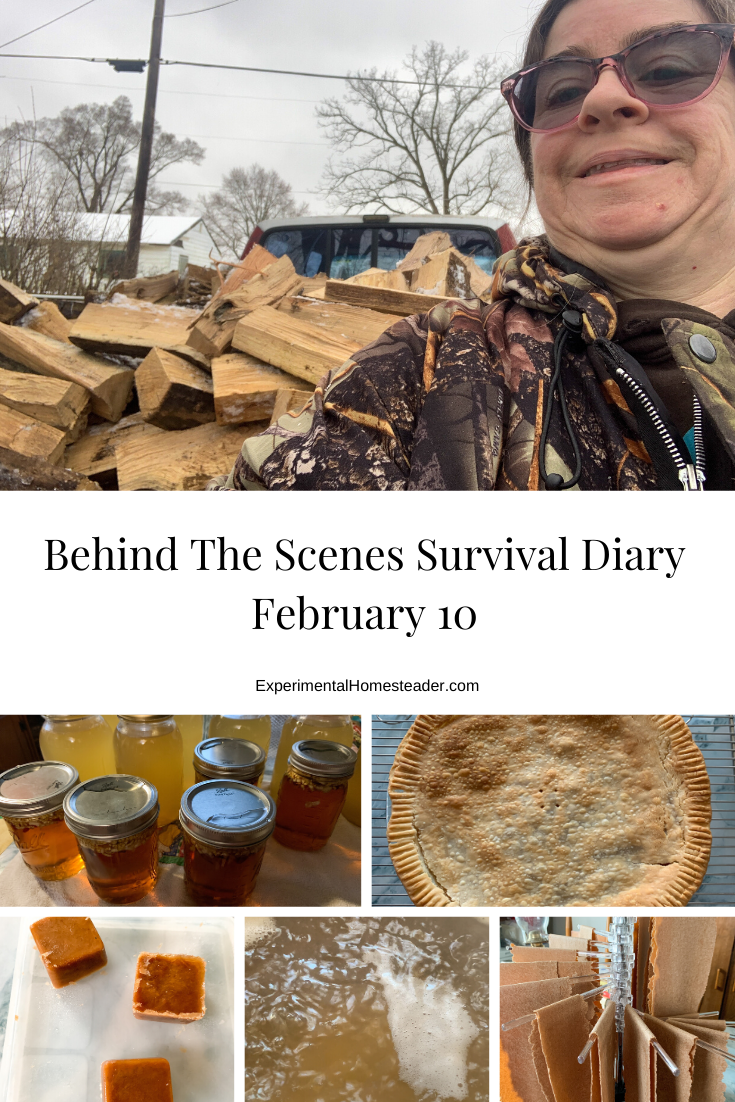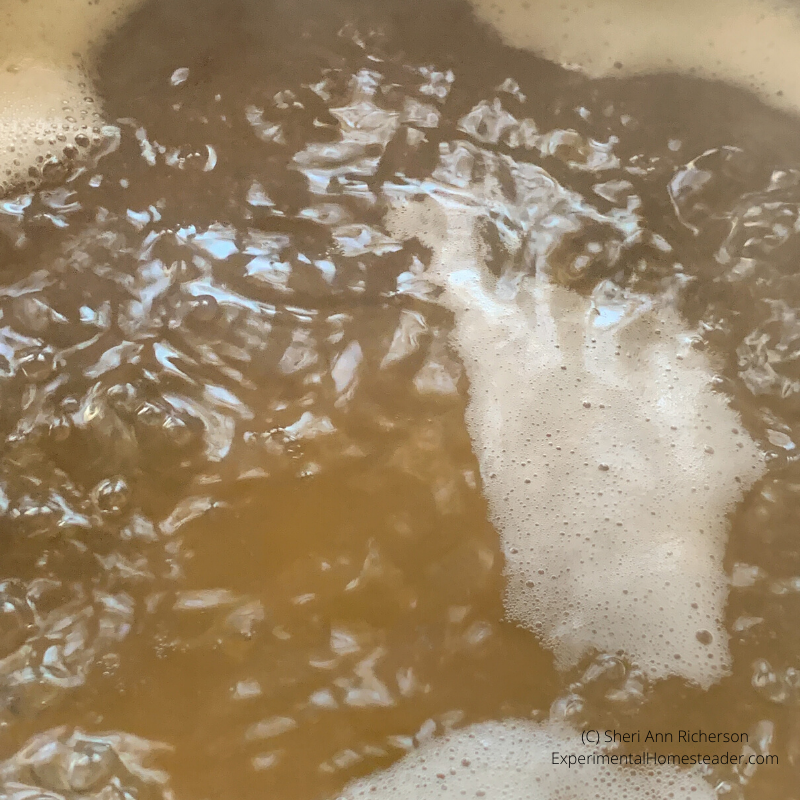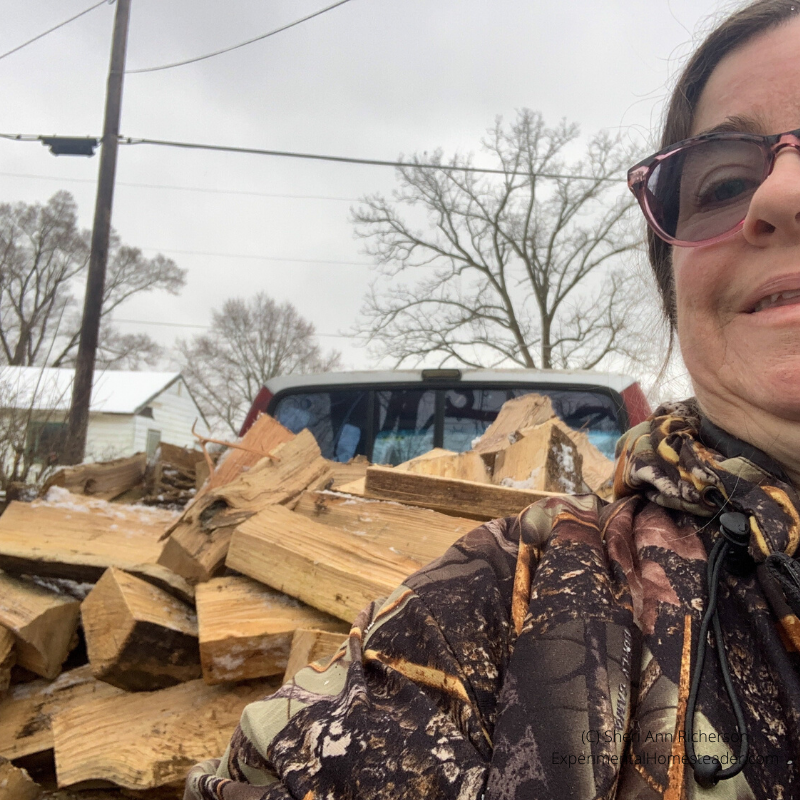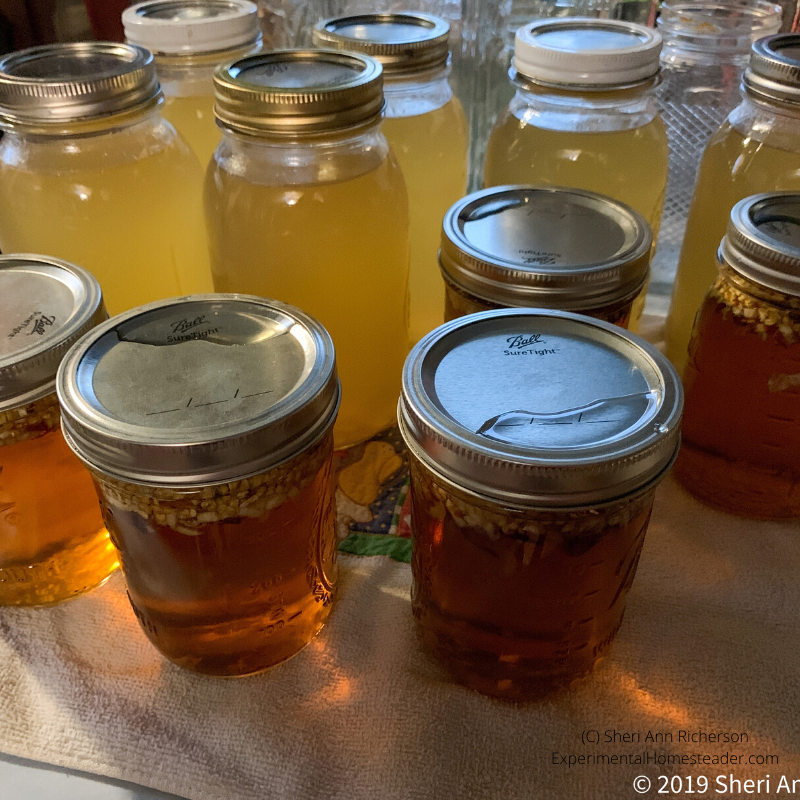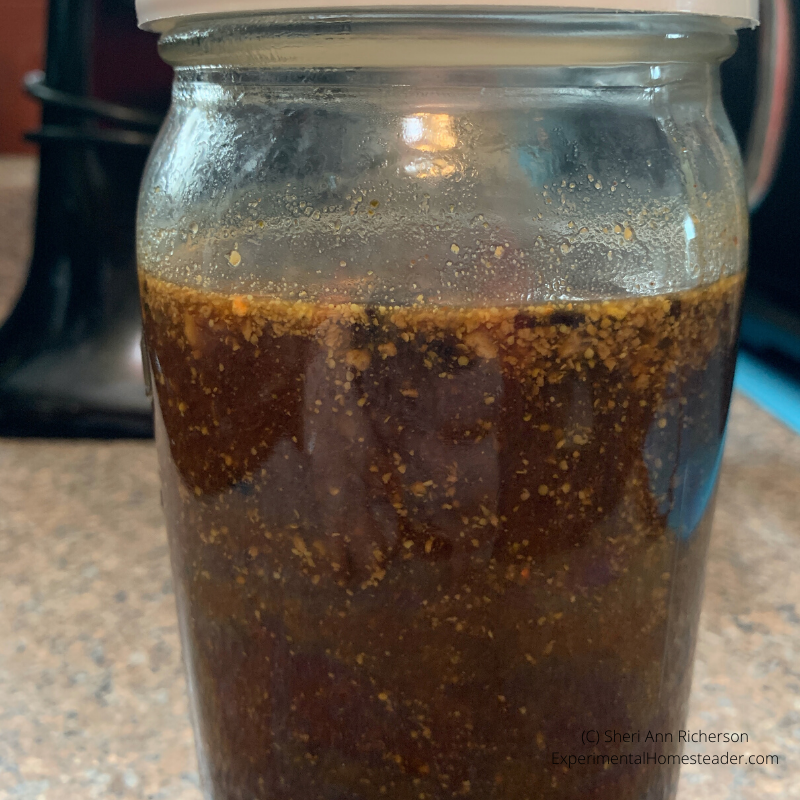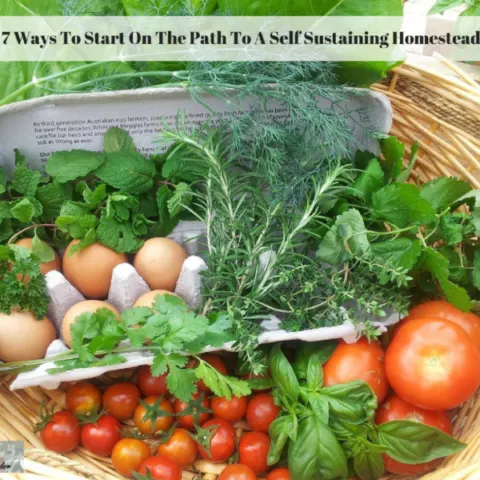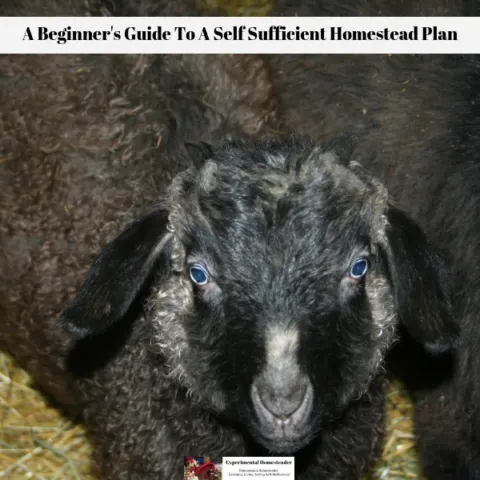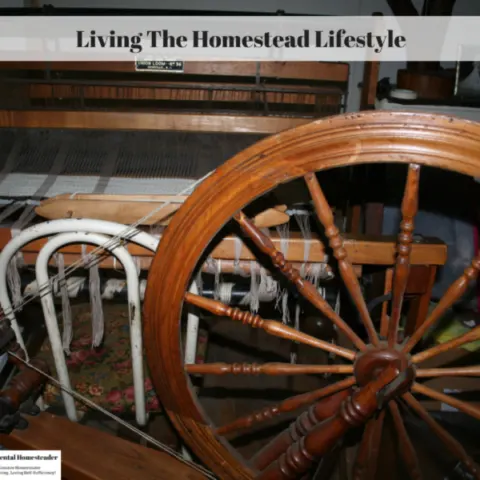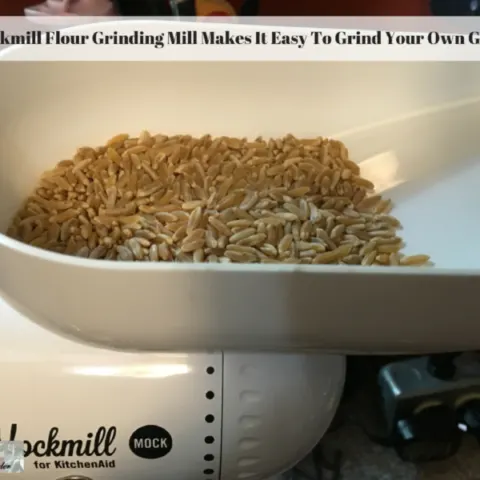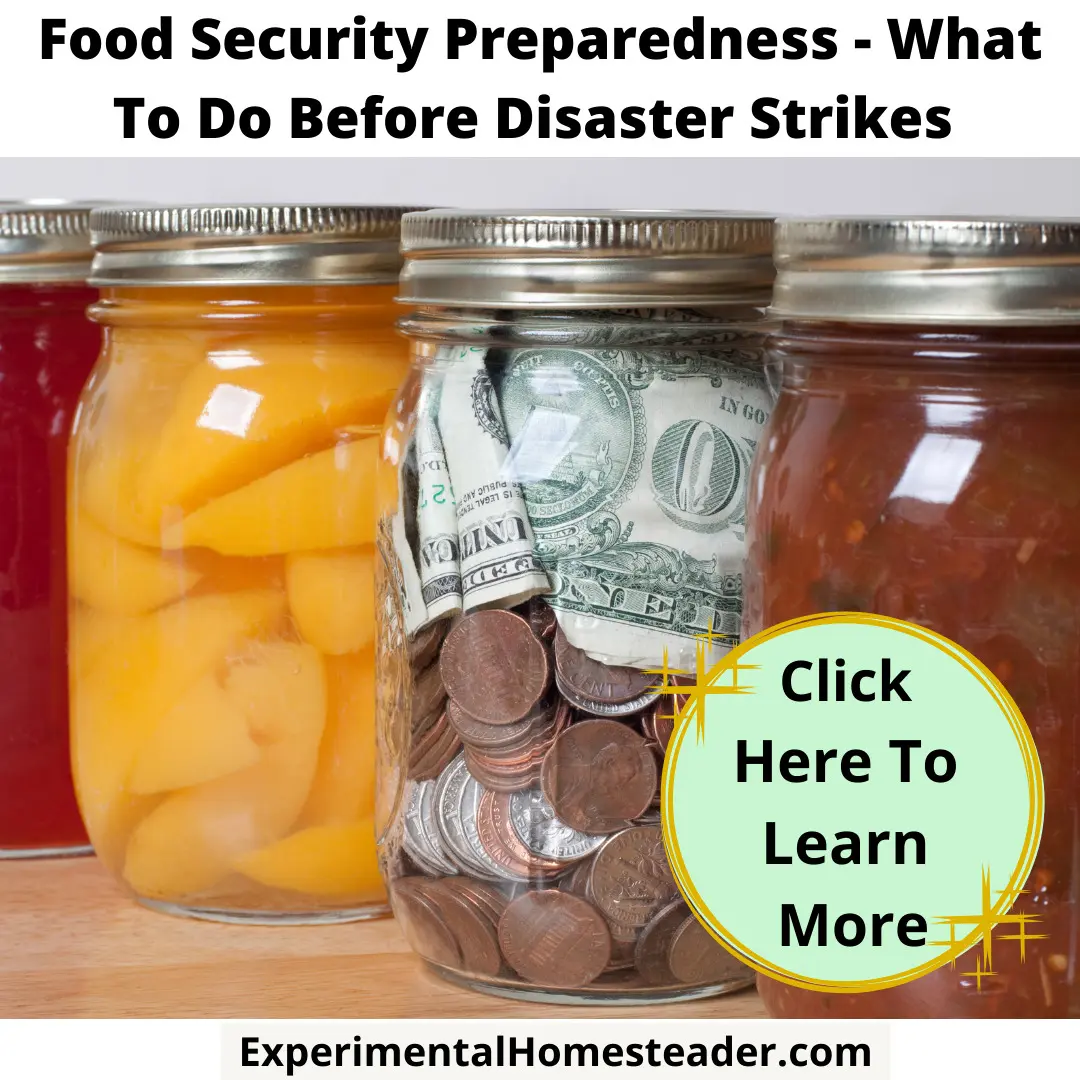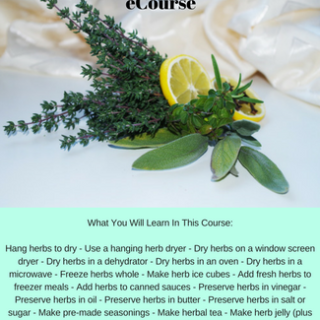Content Warning: Some parts of this survival diary post contains graphic descriptions related to my past struggles and personal experiences. Please read with caution if you feel these topics may be triggering or uncomfortable.
This weekend has been a whirlwind of homesteading tasks, and I felt it was the perfect time to write another survival diary.
Between tapping trees, cleaning up the property, hauling wood, and tackling food preservation, it’s been a non-stop stretch of work.
Every task seems essential, and while exhausting, it’s fulfilling in its own way.
From the quiet satisfaction of collecting sap to the physical labor of hauling wood and preserving what I’ve grown, each job ties back to what I’ve built here.
The work never ends, but it’s all part of this way of life I’ve chosen.
This weekend is just one example of the ongoing rhythm of homesteading—there’s always something to do, something to preserve, something to plan for.
It’s a lifestyle that demands both physical and emotional energy, but it's one that brings a deep sense of accomplishment at the end of each long day.
Backyard Sugaring Season: A Homesteader’s Journey
You know, I didn’t always know about my Grandpa’s maple syrup-making days.
It wasn’t until I read about it in a magazine that I even thought about giving it a try myself.
The thought of tapping trees, watching the sap flow, and turning it into something as sweet as syrup felt like something I needed to do.
When I mentioned it to Grandpa, he gave me a handful of his taps and offered all the advice he could, which meant the world to me.
And as I stand out there now, tapping the trees, I can feel his spirit with me.
I often wish I had known sooner, though.
Growing up, I didn't get the chance to spend as much time with him as I’d wanted.
And honestly, I don’t think my grandma would’ve let me help—she thought that was “men’s work.”
It’s funny how life works out, though.
Even now, in those quiet moments when I’m out there, checking the taps, it feels like he’s right there beside me.
There's a deep connection to him, to the land, and to something so much bigger than just making syrup.
But the weather?
That’s something I can’t control.
Some years are better than others, and I can’t always tap as many trees as I’d like.
I’ve learned to roll with it, even though I’ll admit, disappointment does creep in.
I just keep moving forward.
Cleaning Up the Homestead: A Necessary Routine
I won’t sugarcoat it—cleaning up the homestead isn’t easy.
It feels like it’s always been an uphill battle.
Some days, I get angry.
I get frustrated, and the disappointment creeps in when I can’t keep up with the weeds, fallen trees, and the endless piles of wood.
It’s physically demanding, and if I’m being honest, it hurts—sometimes more than I’d like to admit.
There are moments when I’m completely wiped out, and my body just can’t take it all.
I cry, not out of weakness but out of sheer exhaustion.
There’s a weight on me, and it feels like I’m constantly fighting just to stay on top of things.
But you know what?
I keep going.
There’s no other choice.
The mess doesn’t clean itself up, and if I let it pile up, it just gets worse.
The overwhelming feeling doesn’t go away, but I’ve learned to push through it, one task at a time.
There are days when I wonder if I’ll ever see the end of it—when the yard will ever look clear again, when the barn will stop feeling cluttered, and when I’ll finally catch up.
The work is never-ending, but giving up isn’t an option.
One thing that keeps me going is when a neighbor offers a helping hand.
Whether it’s lending tools, picking up sticks, or simply giving me a boost when I feel like I’m drowning, it’s more than just a favor—it feels like community.
It’s a reminder that we’re all in this together, that there’s still support and kindness when I feel like I’m alone in this battle.
And though I may not have the time or energy to return the favor right away, it fills me with hope.
In a world where so much feels uncertain, that sense of belonging makes all the difference.
Building a Safe Place for the Chickens: Creating Stability
Creating a safe space for my chickens has become a huge part of what I do around here.
It’s more than just protecting them from predators—it’s about creating stability for this homestead, and that’s something I can’t afford to overlook.
The chicken run?
It's an ongoing project.
The weather always seems to be in the way, but I push through because I know how important it is.
When I think about their safety, it’s not just the physical protection that matters.
It’s their overall well-being.
I want them to feel secure, not just from the hawks or foxes, but from everything.
It’s my job to give them that, and in doing so, I feel like I’m creating stability not just for them, but for my whole homestead.
Cutting, Splitting, and Hauling Wood: A Never-Ending Task
There’s something about cutting wood that’s both a blessing and a burden on the homestead.
It’s an ongoing battle, year after year, just to make sure I have enough to last through the winter.
I swear, some days it feels like the woodpile is growing faster than I can keep up with it.
When you’re out there in the cold, chopping and splitting logs, it’s easy to start feeling frustrated.
I get tired—physically, emotionally, mentally—and some days I wonder if I’ll ever get ahead of it.
The weight of the wood, the ache in my back, the calluses on my hands, it all adds up.
But here’s the thing about wood on a homestead: it doesn’t wait for you.
The fire keeps needing fuel, the temperatures keep dropping, and I keep pushing.
Most of the wood on our property is wet and needs to dry out, which makes hauling it all even harder.
But sometimes, we get lucky and find dry pieces.
This past week, Jeffrey was cutting and splitting wood using my small log splitter, but then his chainsaw died.
And just like that, I found myself buying wood by the truckload.
At $55 a week, it adds up quick.
It feels like I’m working just to pay for firewood sometimes, but honestly, compared to what my electric bill used to be, it’s a little easier on the wallet.
The heavy lifting isn’t just physical—it’s financial too.
For over a decade, I’ve been buying wood, loading it, hauling it, and stacking it.
And every year it feels like it’s getting harder.
The last few years?
They’ve been tough.
The stress of finding enough money, juggling bills, and hoping the firewood I bought lasts the season—it’s been exhausting.
I can’t help but think about how this fire is more than just a source of warmth.
It’s a symbol of my self-sufficiency.
It’s a reminder that, no matter how hard things get, I’m still fighting to stay in control of what I can.
When I look at that wood stove flickering, I feel a little peace.
In the midst of all the chaos, that wood burner is my anchor.
It represents more than just heat—it’s my connection to the land, to everything I’ve worked so hard to build.
Even if it’s difficult, even if it feels impossible, I know I’m doing the work that matters.
It’s a struggle, but it’s mine.
And I’ll keep fighting, one log at a time.
Food Preservation During the Off-Season: A Connection to the Land
There’s always so much to do on the homestead, and this past week was no exception.
I spent time canning beef bone broth, something that takes time, patience, and a bit of effort—but it’s so rewarding.
You can always buy bones at the store, but if you raise your own animals, saving the bones when they’re butchered becomes part of the process.
Bone broth is not just delicious; it’s packed with nutrients and so good for you.
Plus, making your own is a great way to save money, especially when you know how expensive store-bought versions can get.
Along with the bone broth, I found time to make tamarind paste, which will eventually become part of my homemade Worcestershire sauce, and I preserved lemons, which will come in handy for all sorts of dishes later.
I also made a batch of Thai Sweet & Sour Sauce, got a new batch of Ginger Bug going, and even made 2 pounds of whole wheat pasta that I transformed into dumplings and fettuccine.
Oh, and I baked a cherry pie using cherries from our tree that I had canned earlier, all while starting a fresh batch of bacon.
It’s a lot of work, no doubt, but the satisfaction of knowing I’ve made all these things myself is comforting.
There’s peace in it—knowing that I’m creating something wholesome for my family.
More than that, I’m saving money and stepping away from the overly processed grocery store options.
Food preservation isn’t just about filling jars for me.
It’s about caring for my family and making sure we’re ready for whatever the off-season might bring.
It’s a small victory every time I can preserve something for later.
When I think about what I’m preserving, it’s more than just food.
It’s a connection to the land, to the animals I raise, and to the survival skills I’ve worked so hard to develop.
And that’s what makes it worth it.
It’s not just about surviving—it’s about thriving, even if it’s a struggle sometimes.
A Legacy of Resilience: How the Past Shapes My Homesteading Journey
When I look back on my childhood, it’s hard to shake the memories of hunger and scarcity that marked those years.
I learned what it was like to go without—to feel the gnawing emptiness in my stomach when there was nothing to eat.
Growing up, I wasn’t surrounded by the comfort of a full pantry or meals on the table every day.
It wasn’t the norm for me to have food when I needed it.
If there was food, it was often the bare minimum.
The memories of long summers with no breakfast and only the occasional handful of strawberries for lunch still sting.
It wasn’t just the absence of food—it was the lack of stability, the lack of security.
And that, I think, is where my dedication to homesteading comes from.
Back then, my grandpa was the one who knew how to preserve food, canning things like vegetables and fruits, but I wasn’t raised with those skills at my fingertips.
My mother turned to store-bought, pre-packaged food.
There was no understanding of the land’s potential, of how to grow and preserve food for yourself.
Food came from a store, stamped with a USDA label, and was often out of reach.
And when the food was there, it was a struggle to get enough.
I learned the hard way what it felt like to eat last, scraping together leftovers after everyone else had their fill, sometimes even eating things I didn’t want or was forced to eat in ways that no child should be.
I was forced to eat things I didn’t like, and when I threw up, I was held down and made to eat my own throw up off the carpet.
There were even times when I had to eat hamster food just to fill my stomach.
There were times when there wasn’t enough food to go around, and I learned what it meant to do without.
I learned what it meant to be resourceful, to make do with what I had.
It was moments like these, the hunger, the isolation, and the humiliation, that planted the seeds for how I live now.
They taught me the importance of food security and why I’ll never take a meal for granted.
They also taught me the value of giving, which is why Plant-A-Row For The Hungry is so important to me.
I make sure every year, without fail, to donate food I grow to local food pantries.
I know what it’s like to be on the other side, and I want to make sure no one feels that kind of hunger.
This sense of scarcity, though it was painful, led me to create something different for myself, my family, and my animals.
Today, when I can bone broth, preserve my harvest, or prepare for winter, it’s more than just a means of survival.
It’s a way of healing.
It’s about providing for my family—not just with food but with the security and stability I never had growing up.
It’s about control, but also about creating the peace I longed for as a child, knowing I’m the one who gets to decide what’s in my pantry, what’s in my freezer, and what’s on my table.
And my animals—well, they’ve become more than just a means of survival.
I have a deep respect for the life I’m responsible for.
I can honestly say I’m at peace with the circle of life and what that means for the animals I raise.
There’s a beauty in knowing that I’m providing them with a life they wouldn’t have had otherwise.
It goes beyond just survival skills—it’s a relationship built on trust, care, and understanding of the land and animals I tend to.
That connection brings me healing, too.
Looking at all of this—the food preservation, the growing, the giving—it’s clear to me that homesteading is more than just a way to survive.
It’s a way to heal.
It’s a way to create something better, to provide what I never had.
And it’s in every act, every jar of canned food, every meal I make, every piece of land I nurture.
Homesteading is where I’m finding the peace and control I’ve always needed.
Taking Care of Me: A Balance I’m Still Trying to Find
The physical work of homesteading takes a toll on me—my body aches, and I don’t always give myself the care I need.
I don’t take time to rest, always moving from one task to the next.
I suspect that’s part of why I’ve been getting sick lately and dealing with health issues.
But I don’t know how to stop.
I don’t know how to slow down.
Maybe it’s time to find a balance, even if it’s just a little one.
To take a moment for reflection.
To give myself credit for what I’ve accomplished.
To remember that I’m doing this not just for my family, but for me too.
This is more than just about homesteading—it’s about resilience, connection, and a deep-rooted desire to build a life that feels stable, self-sufficient, and real.
It’s about remembering the past while building for the future.
And through every challenge, I keep moving forward.
Because this homesteading journey is mine—and no matter how hard it gets, I know it’s worth it.
Self-Sufficient Living
Explore the ultimate guide to self-sufficient living with our curated list of related blog posts. From food preservation to DIY projects and homesteading inspiration, find everything you need to thrive on your self-sufficiency journey. Perfect for beginners and seasoned homesteaders alike!
The Essential Guide To A Completely Self Sufficient Homestead
Learn how to start living on a completely self sufficient homestead today with this essential guide plus sign up for our FREE eCourse!
How To Be Self-Sufficient In An Apartment
Learn how to be self-sufficient in an apartment. Even if you live in a big city you can learn skills you will use one day on your homestead.
Thriving Through Self-Sufficiency: A Journey to a Balanced Life
Learn how to thrive through self-sufficiency: slow down, live intentionally, and find balance for a healthier and more sustainable lifestyle.
Top 5 Tips for Balancing the Self-Sufficient Lifestyle: Stay Organized, Motivated, and Successful
Discover how to balance the self-sufficient lifestyle with actionable tips for organization, motivation, and sustainable success.
Step-by-Step Guide to Self-Sufficient Living: One Small Step at a Time
Start small with this step-by-step guide to self-sufficient living. Simple, achievable tips to ease into a sustainable lifestyle.
7 Ways To Start On The Path To A Self Sustaining Homestead
A self sustaining homestead is a lot of work but you do get a lot of satisfaction knowing you are living the self sufficient life you've dreamed of.
A Beginner's Guide To A Self Sufficient Homestead Plan
Making a self sufficient homestead plan is the first step to accomplishing your goal of living on a self sufficient homestead.
Seasonal Foraging Guide for Homesteaders: Year-Round Wild Edibles
Enhance your homesteading skills with our comprehensive seasonal foraging guide. Learn how to find and enjoy nature's delicious offerings.
Living The Homestead Lifestyle
Embarking on the homestead lifestyle is not easy. This is why I love Homegrown and Handmade by Deborah Niemann. The homestead tips are great!
Weapons To Include In Your Homesteading Self Sufficiency Survival Kit
Learn what weapons - both lethal and non-lethal - to include in your homesteading self sufficiency survival kit. Also learn why you need to include them.
Mockmill Flour Grinding Mill Makes It Easy To Grind Your Own Grain
The Mockmill flour grinding mill quickly and easily turns wheat berries into flour that is perfect for making freshly baked bread.
Homesteading Today In The USA
Although the Homestead Act of 1862 is no longer in effect, free land is still available for those wanting to try their hand at homesteading today.
How Much Land For A Homestead
When it comes down to the reality of how much land for a homestead you really need, it's much more than just a number. Learn what you need to consider.
What Homestead Living Is Really Like
Learn what homesteading living is really like. It's not always picturesque or romantic. In fact, sometimes it is difficult.
Food Security Preparedness - What To Do Before Disaster Strikes
Learn what food security preparedness skills you need to survive any natural or man-made disaster, and why you should grow your own food.
Learn To Be Self-Sufficient
Learn to be self-sufficient from Sheri Ann Richerson, a modern day self-sufficient woman with these eBooks and printables!
Self Sustainable Living Ideas Using Animals
Animals are a great way to help you acheive your self sustainable living ideas. Learn what animals are best for your self sufficiency plan.
Preserving Herbs For Winter Use eCourse
Do you love fresh herbs but wonder if there is an easy way to preserve them for the winter?
Do you seek other ways to use herbs other than just as a seasoning on food?
There are so many ways to preserve herbs for winter use – from various methods of drying them to freezing them, but it doesn’t end there.
Some of the best ways to preserve herbs in right in the foods you would normally incorporate herbs into – pre-made seasonings, teas, butter or oil.
Then this is the course for you!
What You Will Learn In This Course:
Hang herbs to dry
Use a hanging herb dryer
Dry herbs on a window screen dryer
Dry herbs in a dehydrator
Dry herbs in an oven
Dry herbs in a microwave
Freeze herbs whole
Make herb ice cubes
Add fresh herbs to freezer meals
Add herbs to canned sauces
Preserve herbs in vinegar
Preserve herbs in oil
Preserve herbs in butter
Preserve herbs in salt or sugar
Make pre-made seasonings
Make herbal tea
Make herb jelly (plus tips on how to use these)


